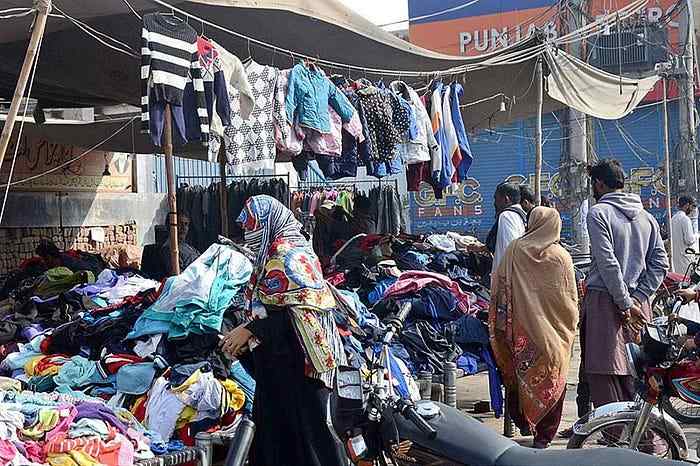Pakistan’s appetite for second-hand clothing has reached unprecedented levels, with imports hitting $511 million in the 2024–25 fiscal year — a sharp rise from $434 million a year earlier. In volume terms, imports jumped from 990,266 tonnes to well over a million tonnes, underscoring how inflation and falling purchasing power are reshaping the country’s shopping habits.
From Main Street to Flea Markets
The surge is visible in Pakistan’s landa bazaars — open-air markets packed with piles of used jeans, worn sneakers, and pre-owned jackets from abroad. Once frequented mainly by low-income groups, these markets are now drawing in middle-class families squeezed by rising prices of locally made and branded apparel.
For many, the shift isn’t about preference but necessity. The World Bank estimates that nearly 45% of Pakistanis now live below the poverty line — recalibrated to $4.20 per person per day. That’s a steep climb from last year’s 39.8%, indicating a widening gap between income levels and basic living costs.
Importers Push for Tax Relief
The Pakistan Second-Hand Clothing Merchants Association (PSHCMA) blames heavy taxation for limiting market efficiency. Importers currently shoulder multiple levies: a 10% regulatory duty, 5% customs duty, 6% advance income tax, and roughly 5% sales tax — on top of a 5% tax on profit margins and income tax for earnings above Rs 600,000 annually.
The Finance Bill 2024 tightened rules further, requiring importers to collect advance tax from distributors, with even higher rates for non-registered businesses. Industry representatives argue that easing these duties could make clothing more affordable for millions.
Global Supply, Local Sorting
Most of Pakistan’s used clothing comes from Europe, the US, Japan, Korea, China, and Canada. Around 60–70% of shipments enter via exporters operating in special economic zones, where high-quality stock is separated for re-export. The remainder — roughly 10–20% — ends up in domestic markets. Duties are steep: Rs 36 per kg for apparel and Rs 66 per kg for footwear.
Price Gap Speaks Volumes
Market surveys show just how stark the cost difference is:
- Imported second-hand jeans: Rs 300–400
- Used shirts: Rs 250–300
- Pre-owned sports shoes: Rs 600–800
In comparison, brand-new local shoes cost Rs 2,500–3,500, while imported branded pairs from Vietnam or China can run up to Rs 5,500.
A Symptom of a Larger Economic Strain
The boom in used clothing is less a fashion trend than an economic indicator — reflecting how rising poverty and high inflation are reshaping consumer behaviour. For millions of Pakistanis, second-hand goods have become a lifeline in an economy where even basic clothing is becoming a luxury.
